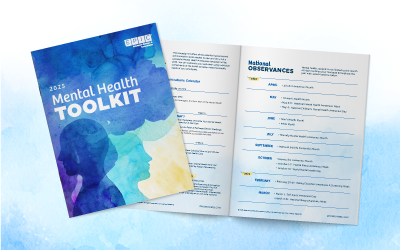Attracting and retaining top talent is a major objective for employers. Offering generous vacation packages, high 401(k) matches for retirement, and company lunches may not be enough to keep your current workforce or draw in a new generation of employees to your business.
Nearly 44 million Americans carry student loan debt, with a collective total exceeding $1.6 billion.
Earlier this year, we explained how employers could help their workforce with student loan debt using the Setting Every Community Up for Retirement Enhancement (SECURE) Act 2.0.
The SECURE Act 2.0 provides employers with the opportunity to amend their 401(k) plans to allow student loan debt repayments as an elective deferral starting on January 1, 2024. Employers can make matching contributions towards their employee’s qualified student loan repayments, whether or not the employee contributes to their 401(k) plan. For more information, check out our articles SECURE Act 2.0 – It’s About Time and 401(k) Plans, Student Loan Debt and the SECURE Act 2.0.
There is another way employers can help their workforce with their student loan debt – right now.
The Fall of 2023 marks the end of the national student loan debt relief program, and borrowers are scrambling to allocate student loan repayments back into their personal budgets. Top employers have used one tax law for decades to stand out from the competition – the Section 127 qualified educational assistance program (EAP). This tax-advantage program can assist all employers in providing some relief from the looming burden of student loan debt. A qualified EAP leads to such positive outcomes, that even the Internal Revenue Service (IRS) encourages employers to establish a plan.
The Challenge of Student Loan Debt
It’s time to acknowledge that student loan debt likely affects a significant portion of your current and potential workforce.
According to the U.S. Department of Education, almost 30 million people between the ages of 25 and 49 hold greater than $962 million in collective student loan debt. This financial burden isn’t just a personal problem for your employees – it also affects your business’s bottom line. Employee satisfaction and productivity can be tied directly to student loan debt anxiety. Furthermore, employers face steep competition as more forward-thinking institutions offer ways to tackle this issue.
Since 1979, employers have been able to establish a Section 127 qualified EAP to assist with tuition reimbursement.
Up to the statutory limit of $5,250 per year, tax-free aid can be used for tuition, books and other qualified educational expenses. In 2020, student loan repayments were categorized as a qualified educational expense, allowing employees to pay down their student loans. This expansion of Section 127 is available until January 1, 2026. Employers only have two more years to take advantage of this program!
Setting up a Qualified EAP in Just a Few Simple Steps
Employers can tailor their programs to fit the needs of their employee population.
After (1) establishing a separate plan document, (2) determining how much and what benefits to provide, (3) which employees are eligible, and (4) educating the employee population about the program, employers may partner with a vendor or choose to administer the program themselves.
The allocated funds can be deducted as a business expense, which reduces the employer’s income tax liability.
One important note, the funds for the program must be earmarked; employers are not allowed to offer their employees a choice between other remunerations and the benefits provided under a qualified EAP. This program is meant to be an additional benefit to your employees.
Finally, the benefits under the program are available only to employees.
Current, former, temporary, and self-employed individuals are all considered employees under Section 127. Furthermore, the program must be offered on a nondiscriminatory basis to ensure the benefits do not favor highly compensated employees.
Some Key Benefits of a Qualified EAP
Employee satisfaction increases productivity.
Financial stress can significantly affect an employee’s performance. Employers that invest in their employees, either through retirement savings, health savings accounts (HSA) fund incentives, or generous paid leave packages can add a qualified EAP benefit to their list of “why you should work here” selling points.
Student loan paydowns demonstrate your investment in the future of your workforce.
What better way than alleviating this pervasive external stressor? Employee-focused programs, like the qualified EAP, encourage company loyalty which is a metric most employers aim to improve. Employees watching their student loan debt shrink more quickly with employer assistance will be happier, more focused on their work, and willing to grow in a company they know cares about their financial wellbeing.
Conclusion
Student loan debt affects most of the professional working class, especially individuals aged 25 to 49, who hold much of the $1.6 billion loan debt. Since 2020, employers have been able to expand the already established Section 127 qualified educational assistance program, by offering student loan repayment assistance as a benefit. Several top employers offer this benefit to attract the best talent, promote company loyalty and increase employee satisfaction. The extension to add student loan repayment as a qualified expense ends on January 1, 2026. The IRS encourages employers to set up a program not only as a benefit for student loan borrowers but also as a tax deduction for employers.
We can help! Our EPIC team has solutions to amend or set up a qualified educational assistance program (EAP) and engage your workforce.
Our compliance team will ensure your qualified EAP remains compliant with Section 127 guidelines. Our Wellbeing & Health Management consultants can assist in building strategic communications; highlighting EAP and other benefits to increase employee engagement and utilization, and building an annual wellbeing strategy to promote a culture of holistic health and safety. Reach out to your account manager to get started.
EPIC Employee Benefits Compliance Services
For further information on this or any other topics, please contact your EPIC consulting team.
Learn About Our Employee Benefits Compliance Services
EPIC offers this material for general information only. EPIC does not intend this material to be, nor may any person receiving this information construe or rely on this material as, tax or legal advice. The matters addressed in this document and any related discussions or correspondence should be reviewed and discussed with legal counsel prior to acting or relying on these materials.
Join Our Next Benefits Curve Series Webinar: Empowering Plan Sponsors to Create Successful Retirement Plans
Thursday, February 22, 2024
Our upcoming webinar covers Secure Act 2.0 legislation (and much more!) and will provide your company with bright, actionable ideas from our in-house retirement team at MAI Retirement, an Affiliate of EPIC, to help ensure you’re prepared to create a successful retirement plan for your company and employees.
2023 TRENDS IN WORKPLACE WELLNESS REPORT
Download the 2023 Trends in Workplace Wellness Report Today
Sign up for our Compliance Matters Newsletter
You’ll receive our monthly newsletter, as well as special compliance alerts and invitations to our compliance webinars
Related Content
Products
Employee Benefits Consulting
Our dedicated benefits team is focused on delivering better outcomes – to both your benefits program and ...
Products
Compliance
We provide comprehensive consulting services and in-depth education regarding the ever-changing employee ...
Products
Wellbeing & Health Management
Our consultants help you create a strategy around health management that will impact your culture and your ...



